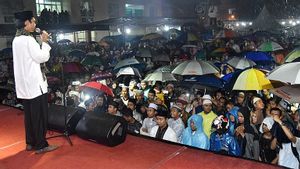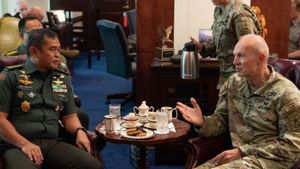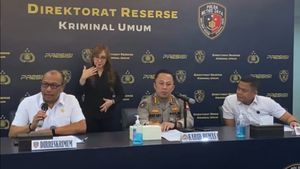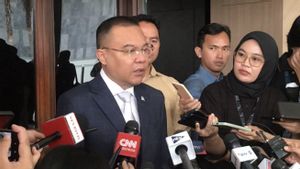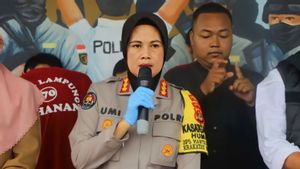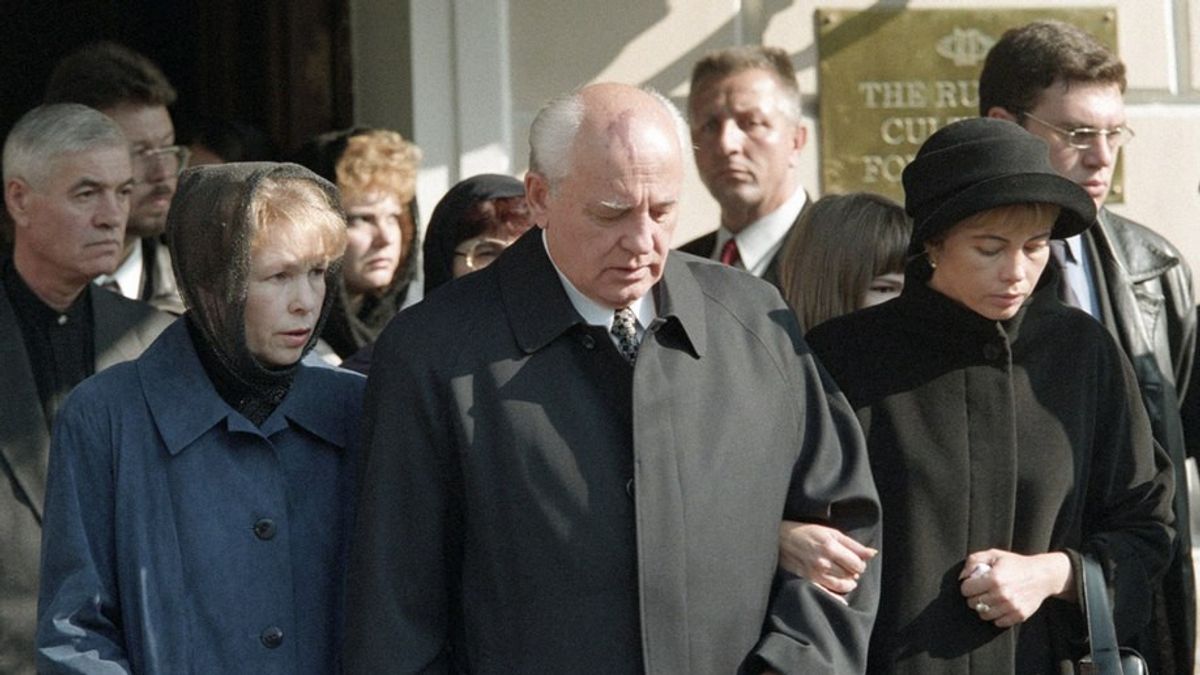
JAKARTA - Mikhail Gorbachev took over the baton of the leadership of the Soviet Union after the death of Konstantin Chernenko. Gorbachev was the last leader of the Communist State before being declared dissolved.
That morning, March 11, 1985, exactly 36 years ago, the sound of minor music started the news broadcast on Soviet radio and television while broadcasting the news of Chernenko's death. He died after suffering a long illness.
On the same day Gorbachev was sworn in as Chernenko's successor. The rapid change in leadership of a 54-year-old man, the youngest young man to take over as general secretary of the Soviet Communist party, shocked many.
Changing traditions does not only occur at the speed of leadership changes. Because shortly after taking office, Gorbachev made a policy that was quite controversial: he announced that he would negotiate weaponry with the United States (US) in Geneva.
As the BBC has reported, Gorbachev's appointment marked a dramatic change in Moscow's leadership. Gorbachev is considered a dynamic figure who has moved rapidly beyond the Soviet hierarchy.
In his State of the Union address, Gorbachev signaled about the big changes to come. He spoke of his desire to freeze weapons development and reduce the international stockpile of nuclear weapons. He is considered to have radically changed the direction of Soviet foreign policy.
He introduced an openness or "glasnost" policy. In addition, Gorbachev also made policies of "perestroika" or fundamental political and economic reforms.
However, his reformist policies are considered to be the cause of the emergence of an acute economic crisis in the country. The seeds of division emerged afterward, until finally the Soviet Union was dissolved. So what actually made the communist state dissolve?

Russia Beyond notes there are three main reasons why the Soviet state dissolved. First is because of the problem of the country's weakening economy.
One of the supporting sectors of the Soviet Union's economy came from oil exports. When the price of oil fell, it clearly affected the economy of the communist country a lot.
So on September 13, 1985, the Minister of Oil of Saudi Arabia, Ahmed yamani, declared his country to leave the agreement to limit oil production and began ramped up production in the oil market. After that, Saudi Arabia increased its oil production by 5.5 times. This caused world oil prices to drop 6.1 times.
Russian Economy Minister Pyotr Aven said the incident was a turning point in the collapse of the Soviet economy. "That was a major turning point in 1986. When oil prices fell, all the possibilities for generating income (for the Soviet Union) collapsed," he told Russia Beyond.
Meanwhile, the fall in oil prices coincided with an economic slowdown, which, according to Aven, had started in the 1960s. This trend was exacerbated by the decline in oil revenues, leading to the collapse of the Soviet economic model.
As the Soviet economy weakened, prompting the then Soviet leader Mikhail Gorbachev to carry out reforms by producing a fairly radical policy, namely perestroika (rebuilding). Perestroika tried to reform the Soviet system, which at that time was showing signs of decline. Gorbachev's reforms are also cited as the second factor in the dissolution of the Soviet Union.
Gorbachev's first reforms, the so-called "economic acceleration", were supposed to unleash the potential of "modern socialism". But Soviet-born American sociologist Vladimir Shlapentokh called these reforms "neo-Stalinist" because they were carried out in the same paradigm as the policies of Gorbachev's violent predecessors.
This policy was considered to have failed to accelerate the Soviet economy, and on the contrary, it weakened the country. "In order to modernize the economy, Gorbachev initiated a process of radical democratization which made the inevitable demise of the Soviet system and the state."

In addition, in the late 1980s, during the Perestroika period there was also an increase in violence caused by ethnic rivalries in the Soviet republics. This was also predicted as the third factor in the collapse of the Soviet Union.
For example, the ethnic violence that occurred in 1986 in the capital of Kazakhstan, Almaty. At that time, young Kazakhs were not satisfied with the appointment of the head of their republic who was an ethnic Russian. The demonstration then led to riots.
Apart from this, there were also mass killings in the city of Sumgait, Azerbaijan, and acts of violence in Tbilisi, Baku and other places throughout the country. The bloodiest conflict occurred in Karabakh between Azerbaijan and Armenia, which is sometimes referred to as "one of the main political triggers that initiated the disintegration of the Soviet Union". In the late 1980s, ethnic conflict turned deadly, killing hundreds in fighting.
The poor economic performance and rampant horizontal conflicts could not be resolved by the Gorbachev government at that time. Because it was getting out of control finally on December 25, 1991, Mikhail Gorbachev announced his resignation as president of the Soviet Union. At the Kremlin, the Soviet flag was lowered for the last time.
"Divisions in society and struggles in a country like ours which is full of weapons, including nuclear, could result in the death of many people and destruction. I could not allow that to happen just to stay in power. Resigning was my victory," Gorbachev was quoted as saying. BBC.
The following day, on December 26, 1991 the Soviet Union officially dissolved, marked by the Russian government's takeover of the Soviet Union's offices.
The English, Chinese, Japanese, Arabic, and French versions are automatically generated by the AI. So there may still be inaccuracies in translating, please always see Indonesian as our main language. (system supported by DigitalSiber.id)


